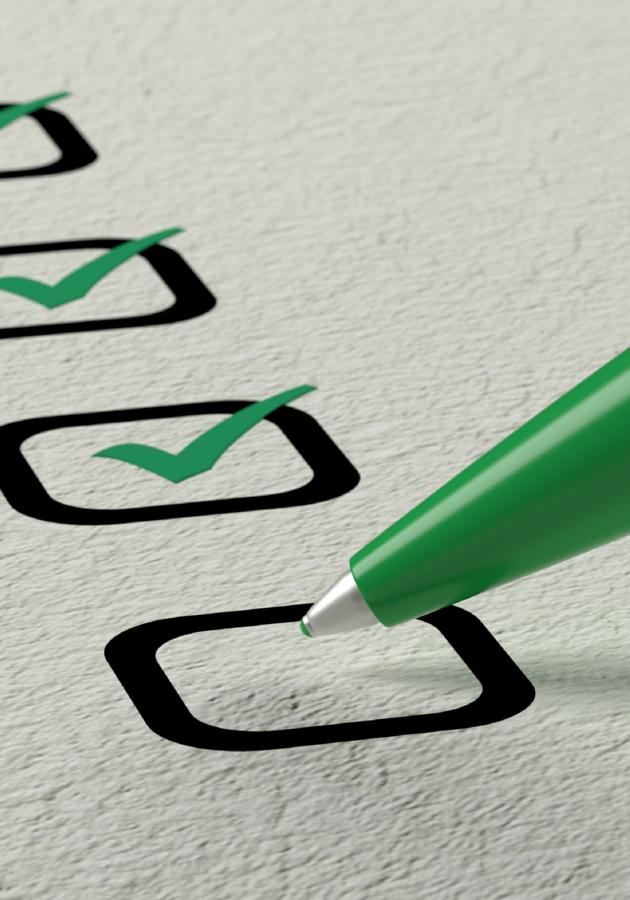Have you ever wondered why being smart and educated is not always a recipe for success? If we neglect the luck factor, it all boils down to special skills that some successful people possess. As nobody gets to the top alone, but always with the help of others, Leil Lowndes concludes that successful people have ‘’a more skillful way of dealing with fellow human beings.’’ After exploring the common traits of successful people, she wrote ‘’How to Talk to Anyone’’ where she discovers which communication tricks help them get what they want. So, get ready to find out how to talk to others and make them work to your advantage.
How would your caricature look?
Body language and facial expressions are an important part of face-to-face communication. Even if you do not say any words, the way you look and move reflects your character to a great extent. To show that a strong connection exists between personality and appearance, Lowndes took her caricaturist friend Robert Grossman as an example. She says, ‘’Bob has a unique gift for capturing not only the physical appearance of his subjects, but for zeroing in on the essence of their personalities.’’ When she asked him how he manages to capture people’s personalities so well, he told her: ‘’It’s simple. I just look at them ... Almost every facet of people’s personalities is evident from their appearance, their posture, the way they move.’’ Deciding to pursue her agenda for ‘’How to Talk to Anyone,’’ Lowndes asked him how he would portray someone who is intelligent, strong, charismatic, principled, caring, and interested in other people. ‘’Easy,” he replied. “Just give ’em great posture, a heads-up look, a confident smile, and a direct gaze.”
Your appearance, voice, and facial expressions make up the first impression your potential business associates form about you and your personality. Why are first impressions important for communication? According to Lowndes: ‘’Because in our fastpaced, information-overload world of multiple stimuli bombarding us every second, people’s heads are spinning. They must form quick judgments to make sense of the world and get on with what they have to do. So, whenever people meet you, they take an instant mental snapshot. That image of you becomes the data they deal with for a very long time.’’
In most cases, first impressions lay the groundwork for entire relationships. Therefore, if you want to be successful in both your professional and private lives, you must learn tricks that help you leave a good first impression. Learning how to improve your posture or how to look at someone and smile can propel you into the world of success quickly and easily.
The sticky eyes and the slow smile
In 1936 American writer and lecturer Dale Carnegie published a popular book ‘’How to Win Friends and Influence People,’’ in which he writes about fundamental techniques for handling people and making them like you more. In this book, Carnegie emphasized how smiling affects other people in positive ways. However, Lowndes believes pieces of advice offered in this book need to be updated. In today's world, it is not enough to smile - you must first learn how to ‘’make your smile magically different.’’
Researchers who study smiles have detected several types of them: cold and warm smiles, real and fake smiles. ‘’Big winners know their smile is one of their most powerful weapons, so they’ve fine-tuned it for maximum impact’’ Lowndes says. How can you fine-tune your smile and turn it into an asset when speaking with others?
When negotiating with potential clients, your goal should be to smile slowly. Rather than smiling immediately at someone, postpone your smile by looking at them for a second. Then, let a big, warm smile ‘’flood your face and overflow into your eyes.’’ This gesture will make them believe your smile is sincere and personalized for them.
Your smile cannot be complete without a direct gaze at the person you are talking to. Western cultures perceive exaggerated eye contact to be advantageous - it increases the feelings of respect and fondness. Also, maintaining eye contact makes you look intelligent. Lowndes advises readers to, ‘’Pretend your eyes are glued to your conversation partner with sticky warm taffy.’’
Nevertheless, consider the gender of the person you are directing your gaze at. Yale researchers have found that increased eye contact affects men and women differently. When two men discuss personal matters, constant eye contact can make another person feel threatened.
You can use the ‘’sticky eye’’ technique both in your professional and private life. There is a reason why anthropologists describe eyes as “the initial organ of romance.” Men often “stick” their eyes to women to make them fall in love with them.
Matching the mood of a listener with small talk
Once you improve smiling and the ‘’sticky eyes’’ technique, you can start working on mastering small talk, since it can also help make a good first impression. Even though this type of talk is informal and covers general topics, the majority of people find small talk troublesome and feel uncomfortable with it. In fact, when Lowndes interviewed top executives from the Fortune 500 list, they confessed they feel more comfortable having big talks with their business associates than having small talk on other occasions.
The reason people dread small talk is that they feel pressured to come across as witty and insightful. Luckily, learning techniques to master it does not involve preparing jokes or potential topics to discuss. Lowndes believes these are irrelevant: ‘’You see, small talk is not about facts or words. It’s about music, about melody. Small talk is about putting people at ease.’’ The main goal when you make small talk should be to match the mood and tone of voice of your listener. For example, imagine you are in an elevator with a few people. The elevator is slow, so you want to break the long silence with small talk. You say, ‘’Hmm. The elevator seems a little flaky.” To continue to talk by matching your lethargic mood, another person in the elevator should say something like, ‘’Yes, it is slow, isn’t it?” However, if another person starts explaining that the elevator is slow because of the poor rail-guide alignment, you would probably feel unmotivated to continue the conversation, as your remarks are not at the same mood level.
So fear not, because most of your listener’s impression has nothing to do with the words you are actually saying. Of course, this does not mean you can say whatever comes to your mind. Avoid starting small talk by complaining or saying something rude. Have a positive demeanor, be empathetic, and speak with passion.
A great way to approach someone and start a conversation with them is to express interest in something they are wearing. “Excuse me, I couldn’t help but notice your ... what is that?” To attract people’s interest, you can also find unusual jewelry, a unique brooch, or a colorful tie to wear at social gatherings.
What do you do?
Once you start talking with someone, your career will become a discussion topic at some point. Just as you likely have a resume prepared on your computer for potential employers, you should prepare a verbal resume for the occasion of small talk. Your oral resume should also contain data relevant to your business career. However, before telling the listener what you are good at, consider what possible interest they may have in your answer. Open the conversation with a ‘’benefit statement.’’
Let’s say you are a hairdresser, and you start talking with a businesswoman. She asks you what you do, and you use this benefit statement: ‘’I am a hairdresser who specializes in flexible hairstyles for the businesswoman. I have many clients who choose a conservative hairstyle for work that they can instantly convert to a feminine style for social situations.’’ When you talk to a teenager, however, you would modify your statement to meet her interests, ‘’I specialize in these really cool up-to-the-minute hairstyles.”
If you want to become successful at your job and extend the circle of your clients, never give just a one-word answer when asked about your job. Think about how your professional experience can benefit people from all walks of life. If you give descriptive answers, it is more likely people will remember you. For example, instead of saying you are a real estate agent, say you help people find the right home. If you are a financial planner, say you help people plan their financial future. A martial arts instructor should say he helps people defend themselves by teaching martial arts.
These types of verbal resumes can increase your chance of success in your personal life as well. When meeting a potential friend or loved one, present your life in a way that will appeal to them. Again, consider an answer that will interest the person you are speaking to.
Learn how to ask for favors
You have learned so far that one of the secrets to success is to present yourself to others in a favorable light. So how can other people help you on your journey? Actually, the better question is - how can you make them want to do favors for you?
Imagine you are interested in becoming a real estate agent. With the help of your cousin, you get a contact from a person working at a large real estate firm who is willing to help you. Do not call that person immediately after getting their contact information. According to Lowndes, you should wait for at least 24 hours before calling. That way, you ‘’allow the person granting the favor time to savor the pleasure of agreeing to it, before having to pay up.’’ Otherwise, you might create a negative first impression - the person granting the favor might think you are insensitive to their time.
Once you reach a person that will help you, do not be embarrassed to ask for a favor. Be straightforward and say how important it is for you and reveal how the other person benefits by doing you the favor. You will come across as forthright, while allowing others to feel the joy of helping you. If you do not immediately uncover your true intentions, you might come across as a sly fox.
Knowing how to ask for favors helps you climb up the corporate ladder as well. On the other hand, you should also know how to be there for someone. Helping others will make you feel good and enable you to ask for favors in return in the future. Again, when asking for a return favor, mind the timing. Calling the person you helped to ask for a return favor after only a few days is not a good idea, as it gives off the impression that you did them the favor just to benefit yourself. Lowndes says: ‘’Allow the favor asker the pleasurable myth that you joyfully did the favor with no thought of what you’re going to get in return. They know that’s not true. You know that’s not true. But only little losers make it obvious.’’
Final Notes
“The lost art of verbal communication may be revitalized by Leil Lowndes,” writes Harvey McKay about ‘’How to Talk to Anyone.’’ The advancements of modern technology have made us favor technology-based communication, as it is fast and available to us all the time. By teaching us numerous communication tricks that significantly improve our chances of success, Lowndes indirectly reminds us how powerful face-to-face interaction can be. That is the real value of this book.
12min Tip
Think about how your professional experience helps others meet their needs. Then, prepare benefit statements that address those needs.





























